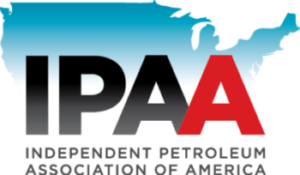Jan 13, 2016 IPAA Welcomes Workable Conservation Measures for the Northern Long-Eared Bat
WASHINGTON, D.C. – Independent Petroleum Association of America (IPAA) Senior Vice President of Government Relations and Political Affairs Dan Naatz welcomed a final conservation rule for the northern long-eared bat issued today by the U.S. Fish and Wildlife Service. The rule recognizes that oil and gas activities do not threaten the bat’s population and should not be subject to incidental take prohibitions.
“We welcome the Fish and Wildlife Service’s approach in this final conservation plan for the northern long-eared bat. From early on, the Service recognized that a fungal disease known as White Nose-Syndrome is the primary threat to the population of the bat – not human activity or development. We appreciate the Service’s consideration of these science-based facts and of the potential economic impacts of a rule on communities – impacts that go far beyond the oil and natural gas industry.
“As stewards of the land, independent oil and natural gas companies are committed to ensuring the safety of wildlife and their habitats. While oil and gas operations have a negligible impact on the health of the northern long-eared bat, independent producers stand willing and able to comply with conservation measures designed to protect the bat during its most sensitive stages of life. IPAA and its member companies view this plan as a workable compromise and we thank the Fish and Wildlife Service for taking our industry’s concerns into consideration when finalizing this rule.”
Background:
On January 14, 2016, the U.S. Fish and Wildlife Service is expected to publish its Final 4(d) Rule on the northern long-eared bat in the Federal Register. The Final Rule exempts oil and gas activities from incidental take prohibitions in the same way that forest management activities were exempted. A 4(d) Rule is one of many tools provided by the Endangered Species Act to allow for flexibility in the Act’s implementation and tailors regulations to those that make the most sense for protecting and managing at-risk species.
On January 15, 2015, U.S. Fish and Wildlife Service published a proposed 4(d) Rule for the northern long-eared bat, which is listed as a threatened species under the Endangered Species Act (ESA), and opened a public comment period on the proposal. IPAA joined with numerous other industry groups in January 2014, August 2014, December 2014, March 2015, and July 2015 urging the Fish and Wildlife Service not to list the northern long-eared bat as endangered.
In their fifth round of comments submitted July 2015, IPAA and API specifically requested that all oil and gas development activities be allowed the same incidental take stipulations afforded to forest management. Oil and gas activities have approximately 150 times less impact on bat habitat than the forest management activities that the Service has already exempted. IPAA President Barry Russell pointed out in the Pittsburgh Post-Gazette, the real threat to the northern long-eared bat is a pandemic fungal disease known as white-nose syndrome – not human activity – and an ESA listing offers no tangible benefits to the bat’s population or the prevention of this deadly disease.
About the Independent Petroleum Association of America
The Independent Petroleum Association of America (IPAA) is a national upstream trade association representing thousands of independent oil and natural gas producers and service companies across the United States. Independent producers develop 90 percent of the nation’s oil and natural gas wells. These companies account for 54 percent of America’s oil production, 85 percent of its natural gas production, and support over 2.1 million American jobs. Learn more about IPAA by visiting www.ipaa.org and following @IPAAaccess on Twitter.








